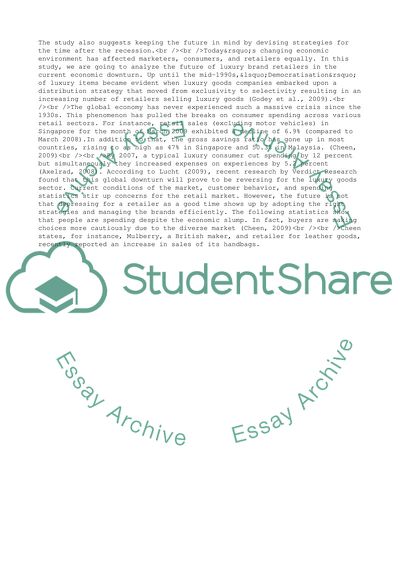Cite this document
(Within the Current Climate What Is the Future for Luxury Brand Coursework, n.d.)
Within the Current Climate What Is the Future for Luxury Brand Coursework. https://studentshare.org/business/1728494-within-the-current-climate-what-is-the-future-for-luxury-brand-retailers
Within the Current Climate What Is the Future for Luxury Brand Coursework. https://studentshare.org/business/1728494-within-the-current-climate-what-is-the-future-for-luxury-brand-retailers
(Within the Current Climate What Is the Future for Luxury Brand Coursework)
Within the Current Climate What Is the Future for Luxury Brand Coursework. https://studentshare.org/business/1728494-within-the-current-climate-what-is-the-future-for-luxury-brand-retailers.
Within the Current Climate What Is the Future for Luxury Brand Coursework. https://studentshare.org/business/1728494-within-the-current-climate-what-is-the-future-for-luxury-brand-retailers.
“Within the Current Climate What Is the Future for Luxury Brand Coursework”. https://studentshare.org/business/1728494-within-the-current-climate-what-is-the-future-for-luxury-brand-retailers.


